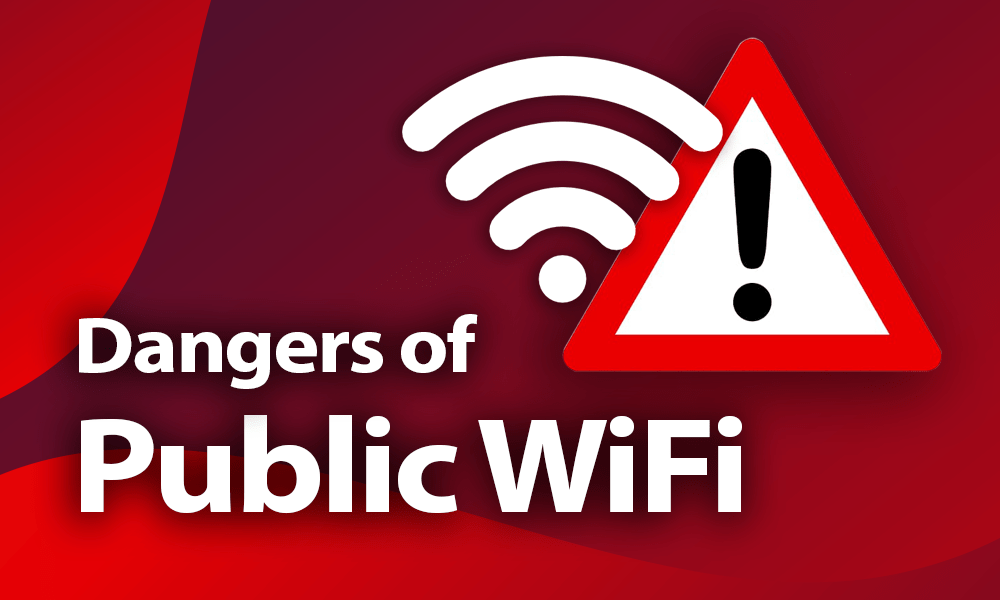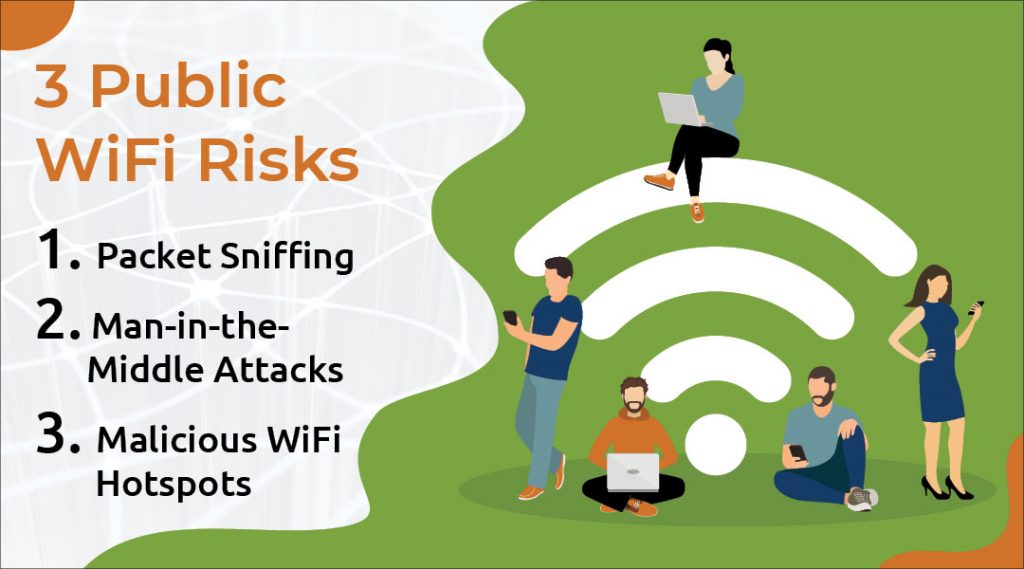Public Wi-Fi is Dangerous for your Health
The Real Risks Of Public WI-Fi:
Public Wi-Fi is widely available, but it can also come with security risks. With so many people relying on public Wi-Fi networks to stay connected on the go, it’s important to understand the dangers and take precautions to protect your personal information. Our study found that 40% of respondents had their information compromised while using public Wi-Fi. We’ll dive into the risks of using public Wi-Fi, where people are using it and what you can do to keep your information secure.
Our recent survey found people use public Wi-Fi for many reasons, including as a last resort when they don't have a cell connection, to surf social media, to make calls via apps such as WhatsApp and FaceTime, while traveling internationally, to save on cell data usage, to stream content such as YouTube or Netflix, because it's better than their home Wi-Fi, for remote work, to play video games, to make financial transactions and for studying.
This shows that public Wi-Fi is widely used for both leisure and work activities, demonstrating the reliance on Wi-Fi networks to stay connected. Just 20% of survey respondents say they use public Wi-Fi for financial transactions. Whether this is because of data privacy concerns or the potential for hacking and theft is up for interpretation. Either way, using public Wi-Fi for any kind of sensitive information is risky if you don't take the proper precautions.
There are many risks associated with unsecured or public WiFi networks. Even if the network in question is a secure public WiFi hotspot, if all you need to do is ask one of the employees for the password, then anyone who wants access can get in anyway.
Even worse, many networks will have open WiFi settings, allowing anyone who’s connected to gain admin access to the router.
1. Packet Sniffing
Colasoft.com defines packet sniffing as “the act of capturing packets of data flowing across a computer network. The software or device used to do this is called a packet sniffer. Packet sniffing is to computer networks what wire tapping is to a telephone network. Packet sniffing has legitimate uses to monitor network performance or troubleshoot problems with network communications. However, it is also widely used by hackers to gather information illegally about networks they intend to break into.”
Packet sniffers make it possible to capture data like passwords, IP addresses, protocols being used on the network and other information that will help the attacker infiltrate the network according to colasoft.com.
Because most people use the same username and password for multiple accounts, their risk is magnified. It is alarmingly easy to get a hold of these types of programs; many are even free. Once an attacker steals your credentials, they can compromise far more than your Twitter or Facebook account.
They can even gain access to your banking information or other private data like birthdays, Social Security numbers, your mother’s maiden name, and your billing address. Check out this article from medium.com to see how much information hackers can dig up from unsuspecting victims in under 20 minutes.
You might think that an expert would be needed to carry out such an attack. However, that’s far from the case. Free plugins list out the URLs you are visiting, compromising your privacy and your security. Consider the following Amazon URL: https://www.amazon.com/s?k=nail+polish&ref=is_box_Amazon uses similar URLs for every part of your shopping experience. The result is that the attacker can see your browsing history and start to see a pattern and use this data to log in to your accounts.
2. Man-in-the-Middle Attacks
Man-in-the-Middle (MITM) isn’t a new type of schoolyard game. Instead, it’s a type of attack where hackers are able intercept all your internet activity. It’s like they are eavesdropping on a conversation between you and your financial advisor. They can watch you log into your online banking app and gather the data you used to gain access to your account which they can use to impersonate your identity later. From there they can see all the information that only you and your bank should see.
While similar to packet sniffing, MITM attacks are significantly more dangerous. This is because the information that the attacker gathers can be modified. When you go to buy something online, the attacker can learn your credit card number. They can also change the account number when you initiate a transfer of funds, so that your money goes right into their bank account and you don’t even know it.
3. Malicious WiFi Hotspots
WiFi hotspots can be named anything the owner would like. How do you know that the StarbucksWiFi free access point is the official one?
Any malicious attacker can set up a hidden hotspot and name it whatever they want. While you browse, your traffic is recorded and later analyzed for any sensitive information that may prove useful in compromising your accounts.
Instead of just connecting to a random WiFi access point, check with establishment to ensure that you’re connecting to their official WiFi and not a fake hotspot.
In Conclusion
Free WiFi is tempting and convenient but is risky and exposes you to data theft. The best way to avoid public WiFi dangers, is to not use it. If you need to access an area’s public network use HTTPS, SSL encrypted browsing sessions, or a VPN. You should always confirm the authenticity of the hotspot of the establishment before you connect. Lastly you should be wary of phishing links, keep your operating system/browser up to date, and regularly scan your web application for vulnerabilities.
Reference:
https://www.forbes.com/advisor/business/public-wifi-risks/
https://www.aura.com/learn/dangers-of-public-wi-fi\
https://rmonnetworks.com/public-wifi-risks-and-how-you-can-avoid-them/
https://www.cloudwards.net/dangers-of-public-wifi/





Comments
Post a Comment